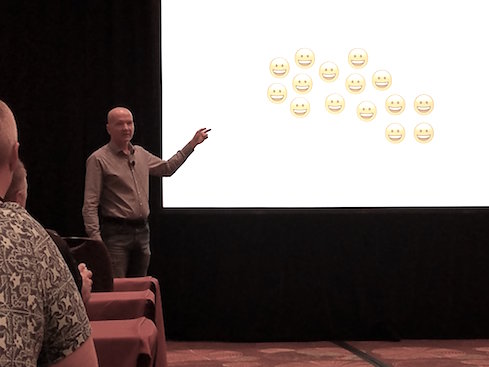Want to increase the number of job applicants for any job and be able to hire the best workers in the country? Add the term "remote welcome" to your job ad.

Your enterprise's executives may think of the organization's headquarters building as an important investment. Maybe they spent money on the big sign in front and desks for thousands of employees. They also may have purchased one of those fancy video conferencing setups with a couple of big screens and a conference speaker phone in the middle of a big table.
With all those sunk costs, does it really make sense to let employees work remotely? Don't you want them sitting at desks or workstations in that shiny new office?
According to John O'Duinn, the answer may just be "no." O'Duinn is has spent a career in technology, working for organizations you've probably heard of, including Mozilla, Hortonworks, and the US government. During that time he's also worked with and managed multiple distributed teams He has established a set of best practices about how to do it right, which he is collecting in a new book. He presented some of those tips and ideas at Interop ITX in the session: Distributed Teams as a Competitive Advantage.
First, why would organizations want to let their employees work remotely? Plenty of reasons.
O'Duinn said that enterprises with distributed teams spend less money on desks and physical office-related administrative tasks. All those saved dollars can be redirected to product development and better serving customers.
Plus, offering potential hires a remote work option will significantly increase your hiring pool. O'Duinn said that job ads that include the term "remote work" get 6 times more applicants. Such jobs can attract the most talented workers from all over the country, without the need for them to relocate. These jobs also make it possible to hire people who cannot commute without great difficulty, including the blind and those who have trouble with mobility.
Employing remote workers is also a better fit with the times. No one is hired at a job for 20 years anymore. The average tenure at companies like Google is less than 2 years. Nobody will want to relocate every two years or less. That would mean moving a minimum of 20 times over the course of a 40-year career.
Plus, if you require everyone to work in a central location, that location becomes a single point of failure for your company. Remember Hurricane Sandy?
But managing a distributed team comes with challenges, too. Employees are humans and they want to feel like part of the team. Remote workers can miss out on office conversations, which put them at a disadvantage to those who work at the main office. It's not just comradery that can get lost. These casual conversations might also include information about assignments, new opportunities, and more. Suddenly the remote worker is not looked upon as favorably because he or she is not volunteering for assignments anymore. But maybe he or she didn't know about those opportunities.
So then the main office workers might start to look at the remote worker as a slacker, and that person will either quit or get fired. When that happens, it's a sign that there's a larger problem.
"The remote person is the canary in the coalmine," O'Duinn said.
So what can you do to keep all the canaries alive and happy?
While he's not an advocate of a lot of meetings, O'Duinn has some opinions about the best ways to run remote meetings. First, video conferencing meetings are the best. Here, people can use visual signals to communicate quickly about meeting logistics. For instance, if you can't hear, you can point to your ear to indicate the issue. Or, if you want to make a point, you can raise your hand. People don't talk over each other this way.
O'Duinn also has opinions about the best tools to use for video conferences with multiple participants. There aren't many tools that work well for this purpose, but he is an advocate of one called Zoom. He is not a fan of expensive, dedicated video conferencing systems because the remote control gets lost or needs new batteries. The best client for video conferencing is your laptop, he said.
O'Duinn also typically gets all his remote team members together once a quarter to work in the same location. How does he get the CFO to spend all that money on a meeting? He points to a desk and asks the CFO how much it would cost to have an employee work there full time for a year. If the costs of the on-site meetings are less than that, O'Duinn has made his case.
"It always is less," he said "It gives me the air cover I need."
About the Author(s)
You May Also Like







